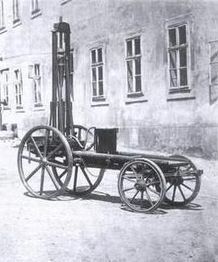May 22 2014
Health systems learn to be lean | Jodi Schwartz | Argus Leader
See on Scoop.it – lean manufacturing

‘We were often stressed at our clinic and running late,’ he said. ‘Patients sometimes had to wait, and I was always behind on documentation.'”
See Mark Graban’s blog post about this article. It is a case he has been following, and is featured in the 2nd edition of Lean Hospitals.
See on www.argusleader.com


May 23 2014
Are Silos The Root of All Evil? | Bill Waddell thinks so
See on Scoop.it – lean manufacturing
 “Functional silos – the idea that all engineers have to work in an engineering department, all sales people have to work in a sales department and all procurement people have to work in a purchasing department – represent the over-arching deficiency in just about all companies. They are at the root of enormous amounts of wasted time and money and they are at the root of most lousy cultures. ”
“Functional silos – the idea that all engineers have to work in an engineering department, all sales people have to work in a sales department and all procurement people have to work in a purchasing department – represent the over-arching deficiency in just about all companies. They are at the root of enormous amounts of wasted time and money and they are at the root of most lousy cultures. ”
We all know bureaucratic horror stories associated with functional silos, like the manufacturing company where Sales, Engineering, Manufacturing and Accounting all had different product nomenclatures. Not only did they have multiple names for the same products, but they grouped them into families differently, so that it was impossible to get aggregate measures of anything.
In light of this, it is tempting to just dissolve these departments and reorganize along the lines of what Wickham Skinner called “focused factories,” Hammer and Champy “business processes,” and Womack “Value Streams.” The idea has been around a while.
According to Mary Walton’s account of the development of the Taurus 1996 in Car, this is what Ford did at the time. and it cut the development time down to 30 months. According to Sobek, Liker, and Ward, however, this is NOT what Toyota did, and it was developing cars in 24 months with functional departments exchanging memos!
In addition, the Taurus 1996, while undeniably an artistically unique design, did not set the market on fire and included body parts that were difficult to stamp out of sheet metal, Walton’s book suggests that the marketing and manufacturing members of the team, having completely transferred their allegiance to the team , failed to make it give due considerations to the needs of the groups they came from.
This suggests that, while often a good idea, collocating all the participants in a business endeavor and breaking all the functional departments is not a panacea.
Sometimes it is technically impossible, because, for example, the functional department is operating a monumental machine that you don’t know how to break down into smaller units that could be distributed among different “value streams.”
Sometimes, you can’t do it for operational reasons. For example, you don’t distribute Shipping and Receiving among the different production lines in the same building, because it would require more docks and access roads, and it would make truck drivers deliver to different organizations at multiple points around the same building.
Sometimes, you end up having specialists report to managers who have no understanding of what they need to be effective, and can’t evaluate their requests for equipment, training, or permission to attend a conference.
Sometimes, you locate an engineer who needs a quiet space to concentrate on technical issues next to a boisterous sales rep who speaks on the phone all day…
Unfortunately, I don’t think all evil has just one root. It’s a bit more complicated.
See on www.idatix.com
Share this:
Like this:
By Michel Baudin • Blog clippings 5 • Tags: Business Process, Focused factory, Fort, Toyota, Value Stream